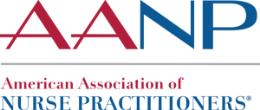Listen to Your Heart: How Nurse Practitioners Can Improve Women’s Heart Health

Combat disparities in heart health with these resources for improving women’s health outcomes.
Heart disease, or cardiovascular disease (CVD), is the leading cause of death for women in the United States. In fact, the Centers for Disease Control and Prevention (CDC) states that more than “60 million women (44%) in the United States are living with some form of heart disease.” Those numbers trend higher when analyzing heart disease in African American women. “Nearly half of all African American adults have some form of cardiovascular disease that includes heart disease and stroke,” states the CDC. The American Heart Association (AHA) adds, “Among Black women ages 20 and older, nearly 59% have cardiovascular disease.”
However, awareness of these trends is shockingly low. Despite being responsible for about 1 in 5 female deaths in 2021, “only about half (56%) of U.S. women recognize that heart disease is their number one killer.” Additionally, the AHA states “only 39% of Black women are aware that chest pain can be a sign of a heart attack; only 33% recognize that pain spreading to the shoulder, neck or arms is another potential heart attack sign.”
Nurse practitioners (NPs) have the knowledge and training to bring awareness to and improve women’s heart health in their places of practice. In observance of American Heart Month, the American Association of Nurse Practitioners® (AANP) is sharing some resources to support NPs as they encourage their patients to choose heart health this February and beyond.
Listening to the Heart
Though the prevalence of heart disease is quite alarming, the World Health Organization reports that “80% of premature heart attacks and strokes are preventable.” Patients with an acute understanding of the risk factors for heart disease — high blood pressure, raised blood lipids, elevated blood sugar — can successfully check and control their overall cardiovascular risk. That’s why the Division for Heart Disease and Stroke Prevention (DHDSP) is rallying for women to “listen to their hearts and speak up for their health.”
You can help your female patients stay informed on the risks of heart disease, check for these conditions and keep their hearts healthy all year round. Encourage your patients to listen to their hearts by accessing the DHDSP toolkit for American Heart Month and exploring the various clinical tools and resources available to health care providers like yourself.
Empowering Patients to Speak Up
Beyond awareness and information about the risk factors of heart disease, there are other barriers preventing patients from improving their heart health. As mentioned by CDC’s Million Hearts® initiative, one of the key barriers to preventive care is “inadequate time with health care professionals to ask important questions and receive personalized advice.” Thankfully, NPs take their time to truly see the whole patient and treat them with person-centered care, making them a vital source of support for patients learning about heart disease.
You can encourage your female patients to raise their voices and speak up about their heart health concerns. Utilize the following tools and resources from AANP and its partners to educate your patients and help them find their voice in the heart health arena:
- Read the latest information regarding women’s risk factors for CVD and tailor your screening and treatment recommendations for female patients with this recent article from the Journal for Nurse Practitioners.
- Discover how self-measured blood pressure monitoring and recommendations on medical adherence can help your patients lower their blood pressure and stay engaged in their heart health outside the clinical setting thanks to these tools from Million Hearts®.
- Help your patients achieve their lipid targets, accurately measure their blood pressure and manage high blood pressure with these clinical resources from AANP.
Continue Your Heart Health Education With AANP
Are you looking for more NP-tailored information for improving your patients’ heart health? Listen to the latest episode of NP Pulse: The Voice of the Nurse Practitioner® to review the four pillars of therapy for heart failure with reduced ejection fraction. Then, visit the AANP CE Center to enroll in cardiology-focused continuing education (CE) courses, available for free or at a discounted rate for AANP members.

